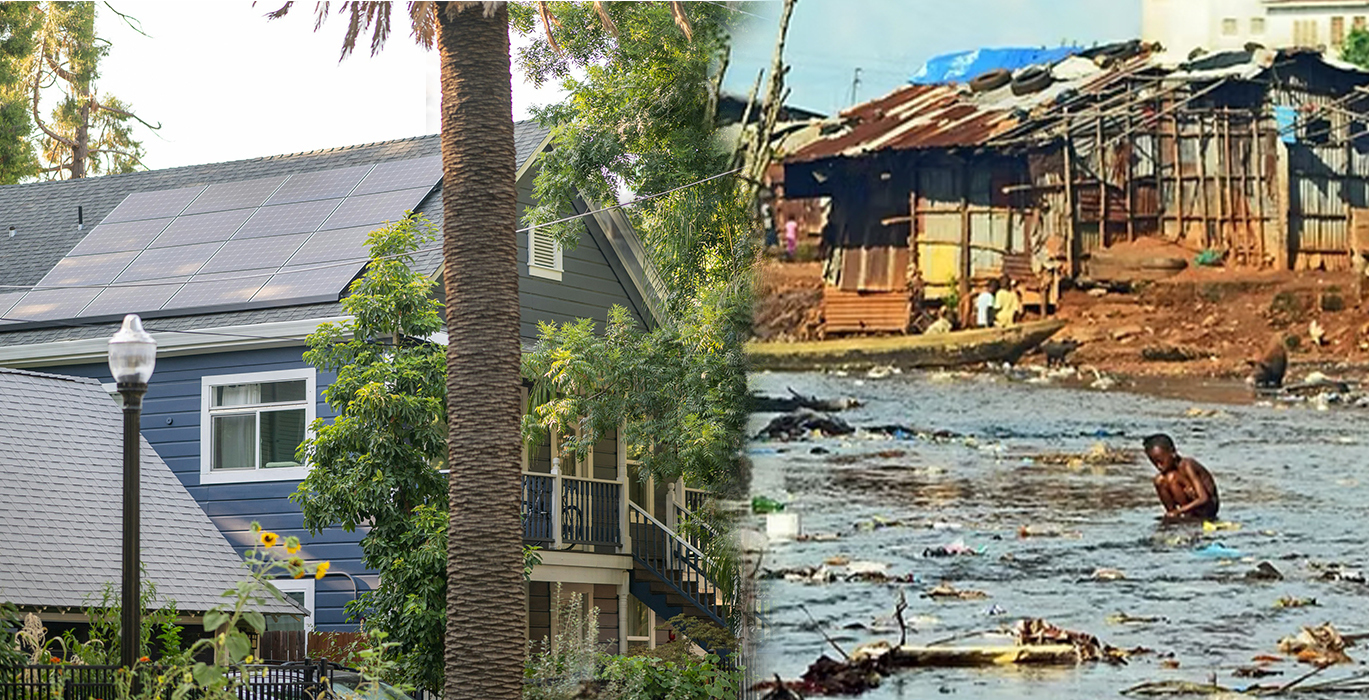The International Capital Market Association (ICMA)'s recently issued Climate Transition Bond Guidelines (CTBG) establish a new "transition-use" label for high-emission sectors, opening a pathway to mobilise $6 trillion in sustainable bond capital.
Transition Bonds Unlock Africa's Industrial Decarbonisation Future
Across the global sustainable-finance landscape, a new milestone has been reached: ICMA has formally introduced the CTBG, offering a distinct label for bonds financing credible transition activities in high-emission sectors.
The shift signals the evolution of the sustainable-bond market beyond renewables and green efficiency, into the industrial heartlands of heavy industry, infrastructure and transport.
For the African continent, the ramifications could be profound. With industrial expansion and emissions growth occurring in parallel, the CTBG framework offers a vital instrument to bridge capital-intensive transition projects with investor-grade standards.
The challenge now lies in execution: how African issuers, regulators and investors deploy and embed the CTBG in local markets will determine whether this potential becomes real flows.
This article applies the Sustainable Stories Africa AIDAP framework to trace the key metrics, stakeholder implications, and the roadmap for Africa's low-carbon industrial future in a structured, metric-style feature.
A $6 Trillion Market and a New Label
The attention phase is critical: investors, issuers and regulators are alerted to the scale ($6 trillion) and the structural change (transition label) in sustainable finance.
| Metric | Detail | Significance |
|---|---|---|
| Market size | The global sustainable bond market is estimated at around $6 trillion under the umbrella of the Green, Social, Sustainability and Sustainability-Linked Bond Principles. | Signals the depth of capital available; the CTBG framework plugs into a large latent pool. |
| Introduction date | CTBG was published in November 2025 by ICMA's Principles Executive Committee. | Marks a formal shift: transition finance receives its own bespoke guidance. |
| New label | The "Climate Transition Bond" (CTB) label targets use-of-proceeds bonds for Climate Transition Projects. | Creates clarity for investors and issuers on instrument type and eligibility. |
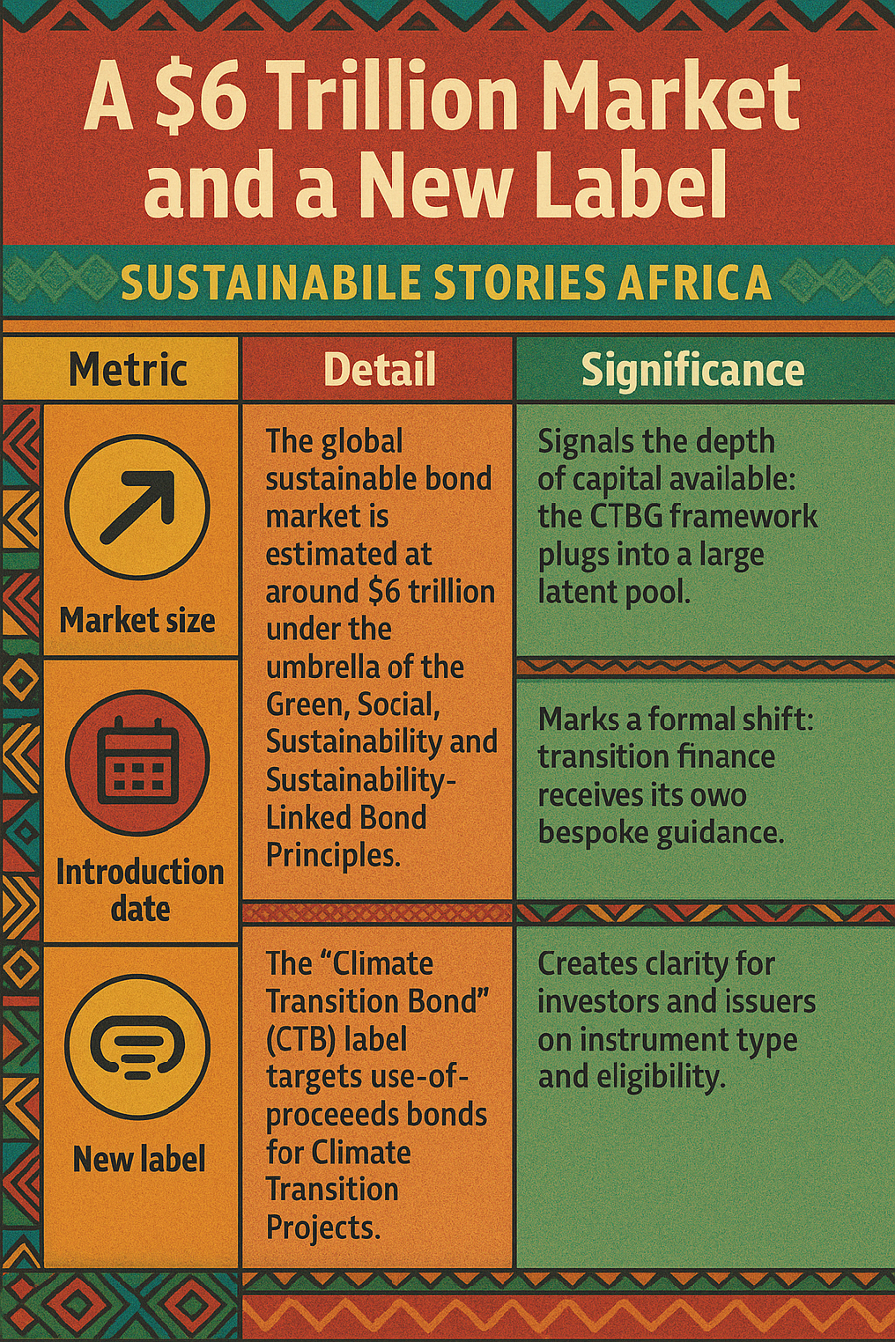
Why Africa Could Be a Key Beneficiary
For Africa, the interest in CTBG derives from an intersection of industrial development, climate imperative and financing challenge.
Key data and dynamics
- African issuance of sustainable bonds in 2023 amounted to less than 2% of the global market.
- Heavy-emitting sectors in Africa, such as steel, cement, and transport, often lack access to so-called "pure green" bond labels despite their decarbonisation potential.
- The CTBG explicitly addresses "hard-to-abate" sectors and high-emission issuers, offering a transition path rather than an exclusionary green label.
African Sector Opportunity
| Sector | Challenge | Transition relevance via CTB |
|---|---|---|
| Cement/Concrete | High CO₂ intensity | Invest in alternative fuels, carbon capture, and energy efficiency under the CTB label |
| Steel/Metals | Legacy assets + infrastructure growth | Retrofit, electrify furnaces, scrap-based production eligible under CTB criteria |
| Transport/Logistics | Rapid urbanisation, infrastructure build-out | Modal shift, upgrading fleets/infrastructure, qualifies as a transition project |
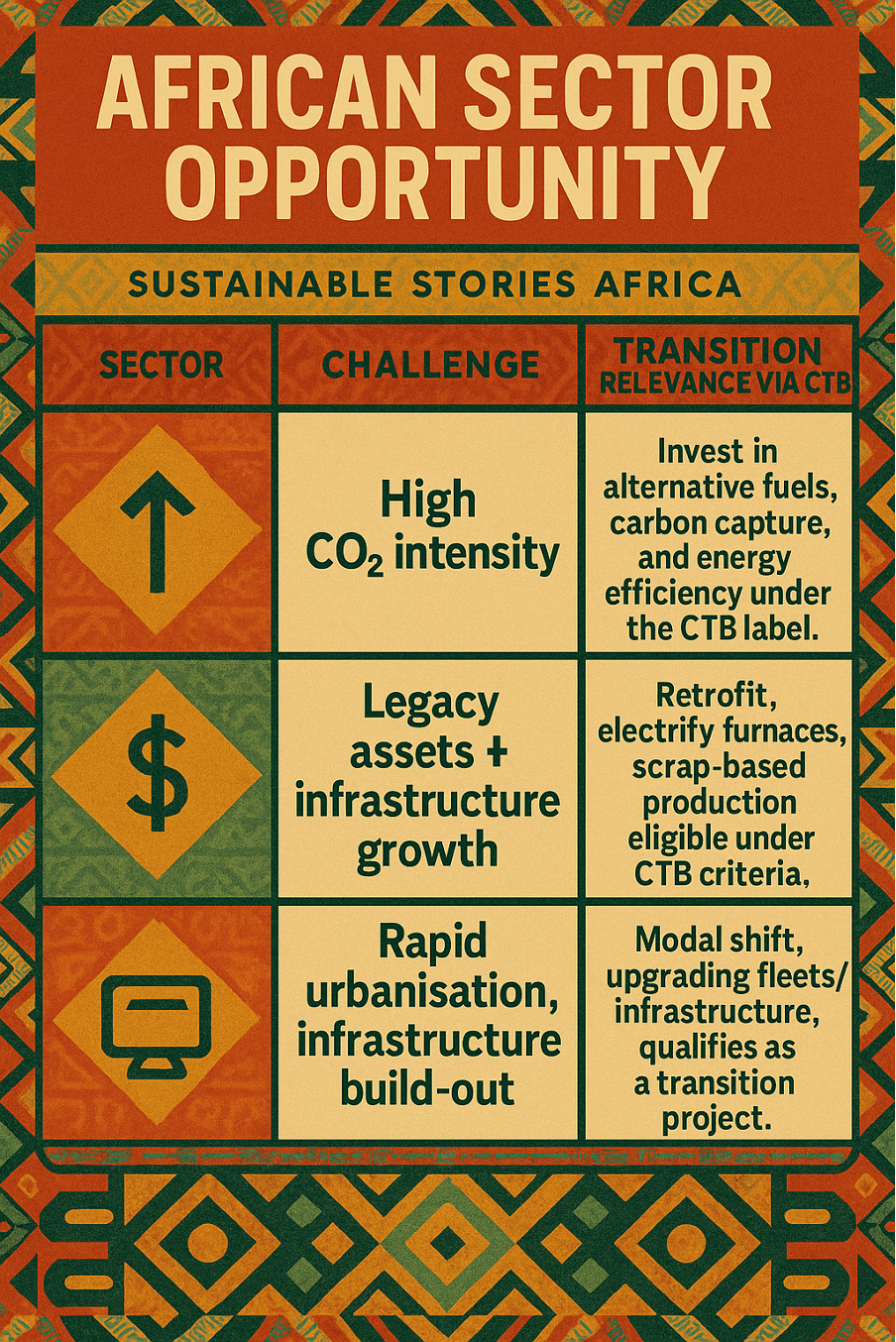
These factors combine to create significant interest: Africa stands at the tipping point of industrial growth and is in urgent need of transition finance.
Credibility, Instruments and Investor Appeal
The desire phase concerns the mechanisms and credibility tools that make capital flow. The CTBG offers several design elements that boost investor confidence, thereby increasing appetite.
Credibility levers
- Use of proceeds: CTBs must allocate to "Climate Transition Projects" (CT Projects) that produce quantifiable GHG reductions or removals.
- Safeguards and disclosure: Issuers must demonstrate alignment with decarbonisation pathways, taxonomies and assess carbon-lock-in risk.
- External review: Framework recommends external verification pre-issuance and post-issuance scrutiny.
The CTB Issuance Flow
Issuer climate-transition strategy → CTB Framework (Use of Proceeds; Project Criteria) → External Review → Issuance → Proceeds allocated → Annual reporting and impact verification
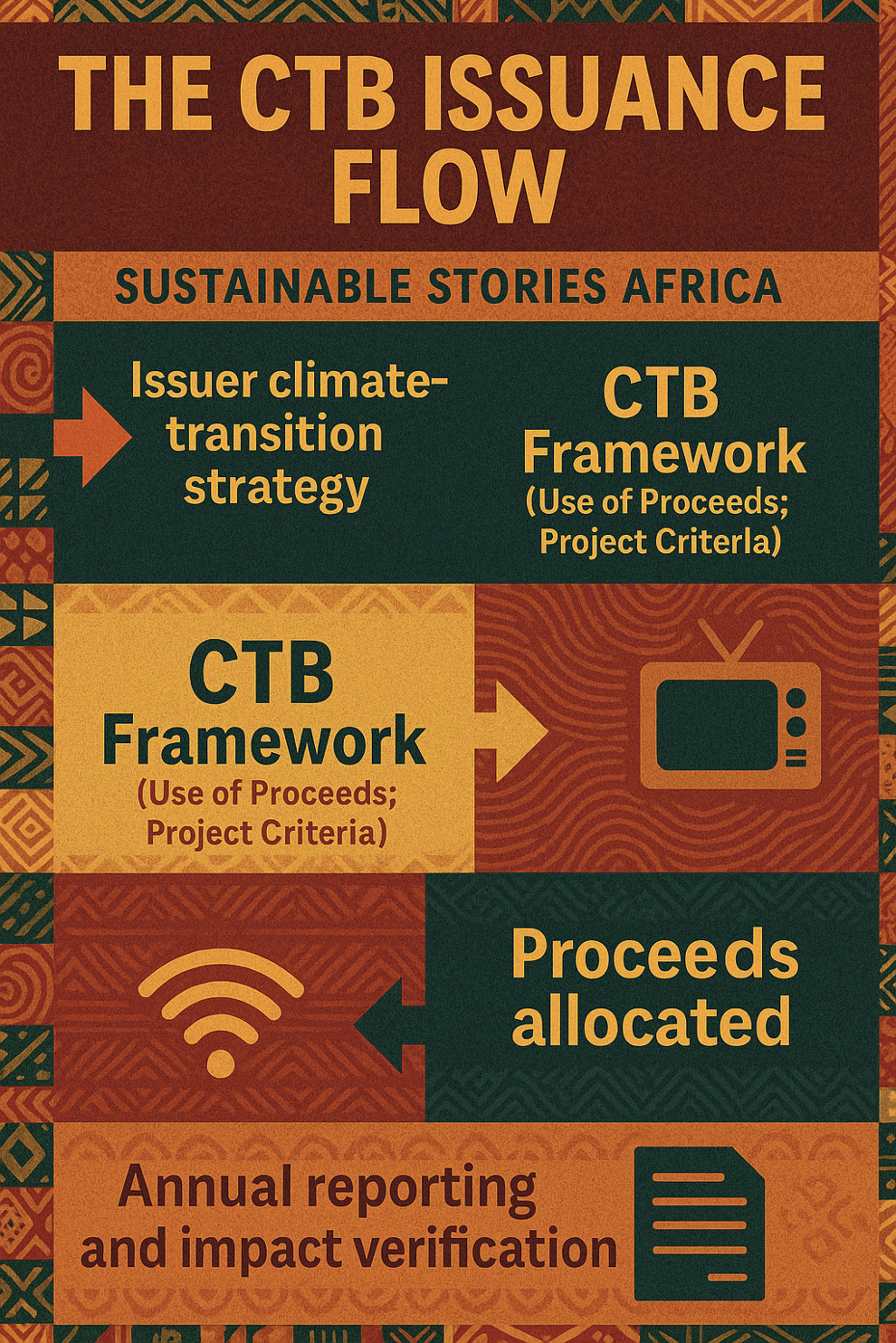
This flow fosters desire among investors by blending transparency and accountability.
With these tools in place, African issuers can attract global finance by publishing a credible transition plan, aligning to the CTBG framework.
For example, a Nigerian cement plant could issue a CTB, allocate proceeds to convert kilns to low-carbon alternatives, and report annually on emissions avoided. The global investor seeking transition-finance exposure gains a measurable instrument.
Steps for African Issuers & Stakeholders
For Africa to convert interest into action, the following strategic steps are required.
- Issuer readiness - Issuers must build or refine a climate transition strategy that aligns with Paris-Agreement goals, set baselines, identify eligible CT Projects and establish monitoring frameworks.
- Framework and issuance design - Develop a CTB Framework that maps use of proceeds, project selection, management of proceeds and reporting that align with CTBG core components.
- Market development and capacity-building - African regulators, capital-market intermediaries and issuers need capacity in taxonomies, transition finance methodologies and credit enhancements. The UN's Transition Finance Emerging Practices report outlines these enablers.
- Investor engagement and ecosystem alignment - African issuance must connect with global allocators seeking transition exposure. Transparent external reviews, standardised disclosures and alignment with frameworks enhance investor confidence.
Key Actions & Responsible Parties
| Action | Responsible Party |
|---|---|
| Establish climate-transition strategy & baseline | Corporate issuer |
| Define CTB Framework & legal documentation | Issuer + underwriter |
| Secure external review | External reviewer/issuer |
| Report annually on use of proceeds & impact | Issuer |
| Develop local taxonomy/market guidance | Regulatory bodies + exchange |
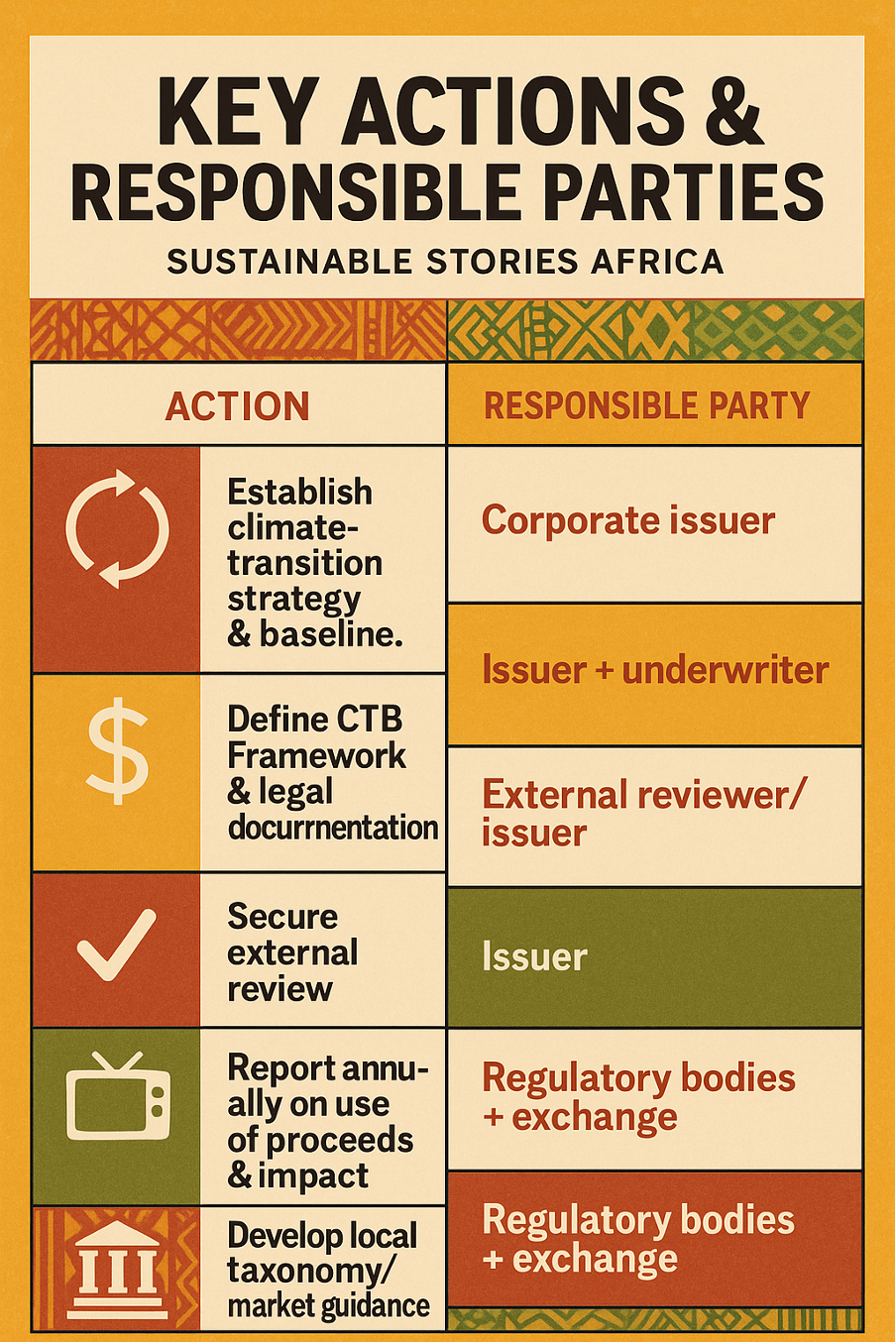
Path Forward – Consolidated Capabilities Drive Africa's Transition Finance Growth
Looking ahead, Africa's ability to harness CTBs under the ICMA framework rests on several interlocking elements: deepening local market capacity, enhancing corporate disclosure standards, mobilising global capital and aligning domestic policy and regulation with transition goals.
The $6 trillion sustainable bond market offers a large envelope, but securing Africa's share will depend on execution.
Key levers include: integrating CTB issuance into national climate strategies and NDCs; strengthening financial infrastructure and regulatory regimes; building issuer readiness programmes; and promoting regional collaboration to aggregate projects and scale instruments.
By fulfilling these conditions, African issuers can not only access transition finance but also embed decarbonisation into the continent's industrial growth paradigm.
The transition is no longer purely aspirational. With CTBG in place, the capital market architecture is moving to align, and Africa must now act.





